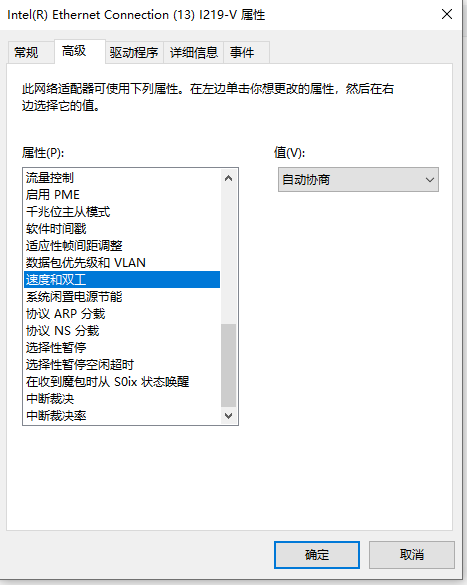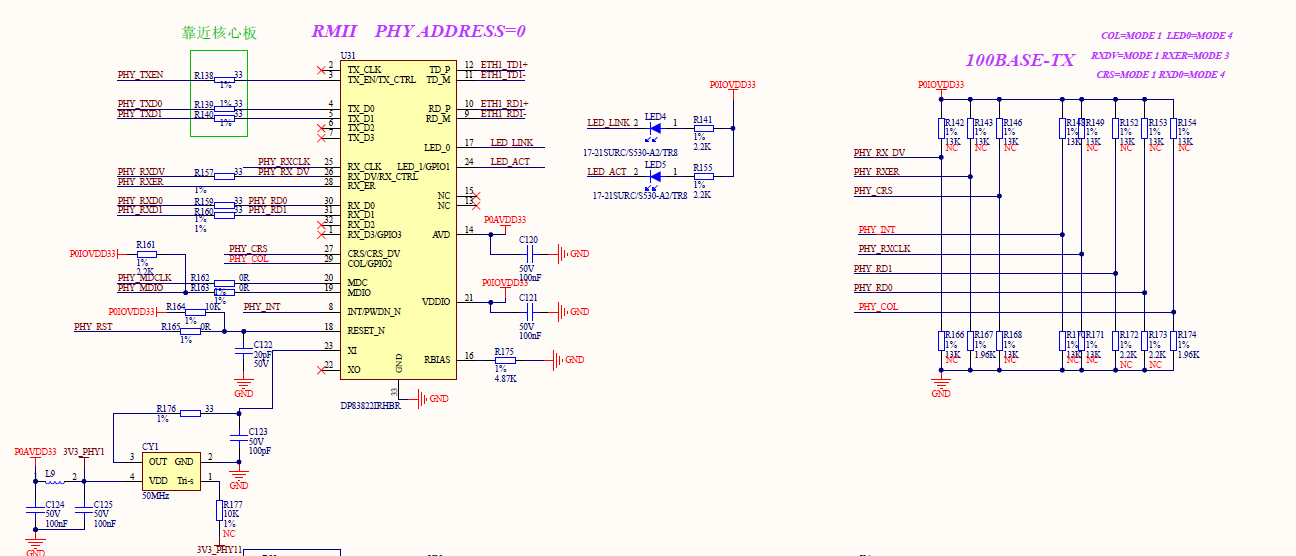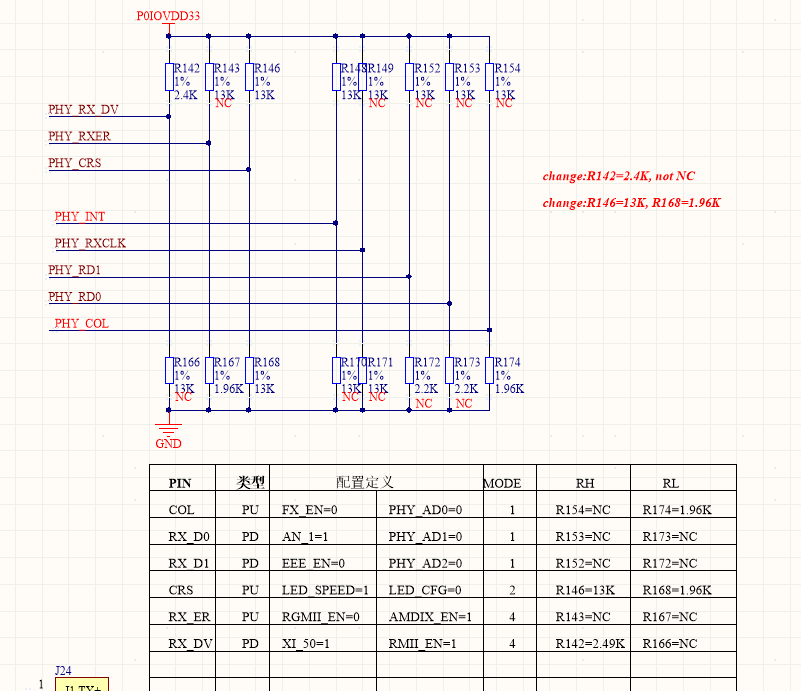Hi Team,
RMII communication mode of DP83822I phy chip is being used on ARM A7. After debugging, it was found that the service side could only be pinged through 10Mbps/full. The customer tried to force to set 100Mbps/full rate but failed. The service side on customer end is 100 Mbps/full which will result in a large number of packet loss. The following are the current communication conditions and the register data:
root@:~# fec 2188000.ethernet eth0: Link is Down
root@:~# fec 2188000.ethernet eth0: Link is Up - 100Mbps/Full - flow control rx/tx
fec 2188000.ethernet eth0: Link is Down
fec 2188000.ethernet eth0: Link is Up - 100Mbps/Full - flow control rx/tx
fec 2188000.ethernet eth0: Link is Down
fec 2188000.ethernet eth0: Link is Up - 100Mbps/Full - flow control rx/tx
fec 2188000.ethernet eth0: Link is Down
fec 2188000.ethernet eth0: Link is Up - 100Mbps/Full - flow control rx/tx
fec 2188000.ethernet eth0: Link is Down
fec 2188000.ethernet eth0: Link is Up - 10Mbps/Full - flow control rx/tx
root@:~# ping 192.168.1.100
PING 192.168.1.100 (192.168.1.100) 56(84) bytes of data.
64 bytes from 192.168.1.100: icmp_seq=1 ttl=200 time=1.85 ms
64 bytes from 192.168.1.100: icmp_seq=2 ttl=200 time=0.909 ms
64 bytes from 192.168.1.100: icmp_seq=3 ttl=200 time=1.25 ms
64 bytes from 192.168.1.100: icmp_seq=4 ttl=200 time=1.01 ms
64 bytes from 192.168.1.100: icmp_seq=5 ttl=200 time=1.09 ms
64 bytes from 192.168.1.100: icmp_seq=6 ttl=200 time=1.04 ms
64 bytes from 192.168.1.100: icmp_seq=7 ttl=200 time=1.05 ms
64 bytes from 192.168.1.100: icmp_seq=8 ttl=200 time=1.22 ms
64 bytes from 192.168.1.100: icmp_seq=9 ttl=200 time=1.18 ms
64 bytes from 192.168.1.100: icmp_seq=10 ttl=200 time=1.24 ms
64 bytes from 192.168.1.100: icmp_seq=11 ttl=200 time=1.02 ms
64 bytes from 192.168.1.100: icmp_seq=12 ttl=200 time=0.970 ms
64 bytes from 192.168.1.100: icmp_seq=13 ttl=200 time=1.15 ms
64 bytes from 192.168.1.100: icmp_seq=14 ttl=200 time=1.02 ms
64 bytes from 192.168.1.100: icmp_seq=15 ttl=200 time=0.923 ms
64 bytes from 192.168.1.100: icmp_seq=16 ttl=200 time=1.17 ms
64 bytes from 192.168.1.100: icmp_seq=17 ttl=200 time=1.07 ms
64 bytes from 192.168.1.100: icmp_seq=18 ttl=200 time=1.08 ms
64 bytes from 192.168.1.100: icmp_seq=19 ttl=200 time=1.12 ms
64 bytes from 192.168.1.100: icmp_seq=21 ttl=200 time=1.10 ms
64 bytes from 192.168.1.100: icmp_seq=22 ttl=200 time=0.871 ms
64 bytes from 192.168.1.100: icmp_seq=24 ttl=200 time=1.18 ms
^C
--- 192.168.1.100 ping statistics ---
24 packets transmitted, 22 received, 8% packet loss, time 23042ms
rtt min/avg/max/mdev = 0.871/1.116/1.850/0.195 ms
root@:~#
phy addr value
0x0000 0x3100
0x0001 0x786d
0x0002 0x2000
0x0003 0xa240
0x0004 0x5e1
0x0005 0xcc61
0x0006 0xf
0x0007 0x2001
0x0008 0x4006
0x0009 0x0
0x000a 0x100
0x000b 0x1000
0x000f 0x0
0x0010 0x1817
0x0011 0x108
0x0012 0xf600
0x0013 0x2200
0x0016 0x100
0x0017 0xa1
0x0018 0x400
0x0019 0x3000
Could you help look into this case? Thanks.
Best Regards,
Cherry




